Are you getting ready for an epic adventure in one of America’s most iconic national parks? Yosemite is the land of soaring waterfalls and towering granite cliffs, and Yosemite puts on a real show for April visitors.
Spring has sprung, and this season of rebirth is the perfect time to explore the breathtaking scenery of Yosemite National Park. Grab your hiking boots, pack your camera, and prepare to be amazed by the beauty of this natural wonderland.
In this comprehensive guide, we’ll take you through all the must-see sights, best hiking trails, and hidden gems that Yosemite has to offer during the month of April. Plus, we’ll share some insider tips on how to make the most of your trip, including where to stay, what to pack, and what to expect.
Important Note for 2024: Yosemite National Park will require reservations to enter the park between on select dates, including Saturdays, Sundays, and holidays during the month of April in 2024. Fortunately, guests staying at The Redwoods In Yosemite Vacation Home Rentals, are not subject to the reservation system because all cabins are in Wawona, inside the park. If you have a valid Redwoods In Yosemite cabin reservation, simply show a copy of your booking confirmation (a screen capture is OK too), and a photo ID matching the reservation. You’ll be able to pay the entrance fee at the gate with a credit or debit card.
So, whether you’re a seasoned hiker, a nature lover, or simply seeking an escape from the hustle and bustle of daily life, Yosemite in April is the perfect destination for you. Let’s dive in and discover all the magic this incredible park has to offer!
The biggest reasons to visit Yosemite in April
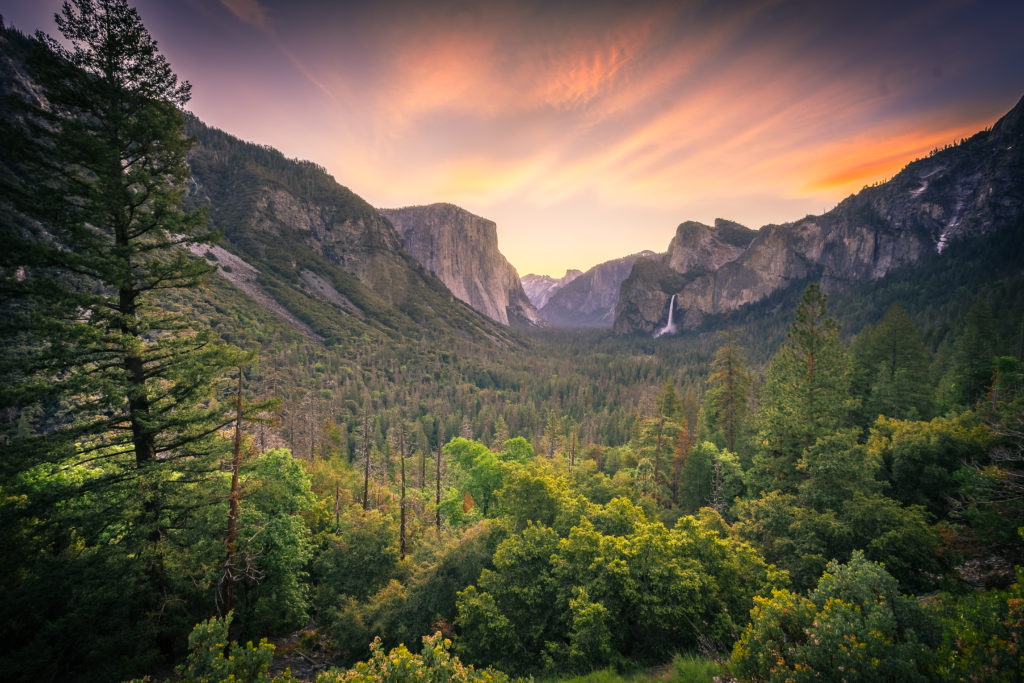
This incredible view of Yosemite Valley is one of your first glimpses of Yosemite Valley when you enter via Highway 41 from Wawona.
April Waterfalls
As the days get warmer and longer, the snow in the high country starts to melt. It flows down through small gullies and large granite basins, and then tumbles over Yosemite’s great cliffs in exuberant, rushing waterfalls. April is a remarkable time for waterfall watchers in Yosemite.
Pre-peak season
April is still a relatively quiet month in Yosemite National Park, especially if you can manage to visit during the week days. This means more of Yosemite just for you! With fewer visitors to the park, you’ll also still be able to find some excellent deals on lodging.
Low-elevation wildflowers
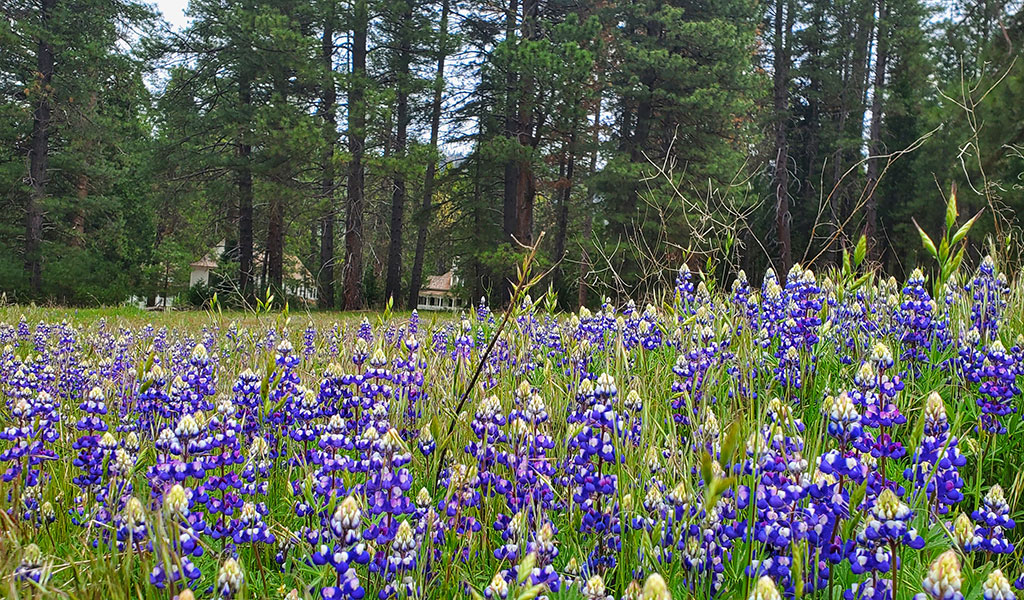
Fields of gorgeous purple lupines blossom in the meadows surrounding Wawona.
Starting in April, the wildflowers in Yosemite Valley and Wawona begin to appear. The Wawona Meadow Loop is an excellent place to go looking for a wide variety of these blossoms, and if you’re lucky you’ll get to see the expansive blooms of lupine covering the meadows and roadsides with purple.
April weather in Yosemite
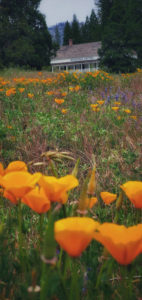
April’s wildflower displays start a lower elevations and spread upward.
April likes to do its own thing when it comes to weather. And every April is a little different.
In an average April, the weather is shifting from the cool crisp days of winter into a more summer-like weather pattern. The average high temperatures in Yosemite Valley are a comfortable 63°F/17°C, while the average low temperature drops to 38°F/3°C. That means most people will want long pants and warmer layers for the morning and evening that you can shed when you’re in the sun mid-day.
The average precipitation in Yosemite Valley in April is 3.2 inches/81 mm. That puts us nicely halfway between the 7.0 inches/177 mm of precipitation in an average January and the negligible 0.2 in/4mm that you can expect in an average August. In real terms this means that there are a lot of beautiful sunny days in April, but it might still rain or snow occasionally. It just depends.
Of course, when you ascend or descend in the mountains, especially during these transitional spring months, you can choose your own season. Temperatures for El Portal, a small town just downhill of Yosemite Valley along Highway 140 has an average high of 72°F/22°C for the month, while in the high country of Tuolumne Meadows, it’s still a chilly average high of 45°F/7°C.
The bottom line on April weather in Yosemite is to come prepared for all kinds of weather. Dress in layers so that you can put on an extra sweater or jacket for mornings or cooler days, and then shed those layers for mid-day or warmer days.
A rain coat is a good idea. Even on sunny days, the misty blast from Yosemite’s waterfalls can be more comfortable with a good rain jacket.
Waterproof shoes or hiking boots can also be a nice-to-have if you’re planning on hiking. As the snow melts you’ll find water everywhere – running in rivulets down the trail or standing in wide puddles. If you don’t have waterproof footwear, extra socks can help keep your feet warm and dry. Or you can try adding plastic bags over your socks but inside your shoes. Your feet will sweat a lot, but they will stay warmer overall.
Finally, just before your visit, make sure you take a peek at the interactive Current Conditions map on the NPS page. It is a terrific resource for information on weather, forecasts, webcams, and water flow in different parts of the park so you’ll know what to expect.
Road Conditions and Chain Controls
A quick side note before we get to the fun stuff:
While storms grow increasingly rare in April in Yosemite, there is still a chance of snow during this month, and if that happens to overlap with your planned trip, you’ll be happy to have tire chains in your vehicle to help with traction on Yosemite’s mountain roads. Higher-elevation roads are more likely to have chain requirements, but they can be in place on any park road.
Keep your eye on the weather forecast for Yosemite in the days/week before your trip. You might want to adjust your layering systems, and see if you’re likely to need chains for your car. If there is a storm in the forecast, be sure to read up on our guide to chain requirements in Yosemite.
The Tioga Road that crosses the Sierra Nevada through Tuolumne Meadows, and the Glacier Point Road which connects Highway 41 to Glacier Point, are usually still closed due to snow in April. This is the tradeoff you make for rushing waterfalls. That high-elevation snowpack is what is turning into roaring waterfalls down low. It’s also another good reason to plan multiple trips to Yosemite during different times of the year.
Right before your trip, the best way to learn about road conditions inside Yosemite National Park is to call the road conditions hotline at 209-372-0200 (press 1 and 1 again to listen to the recording).
What to do in Yosemite in April
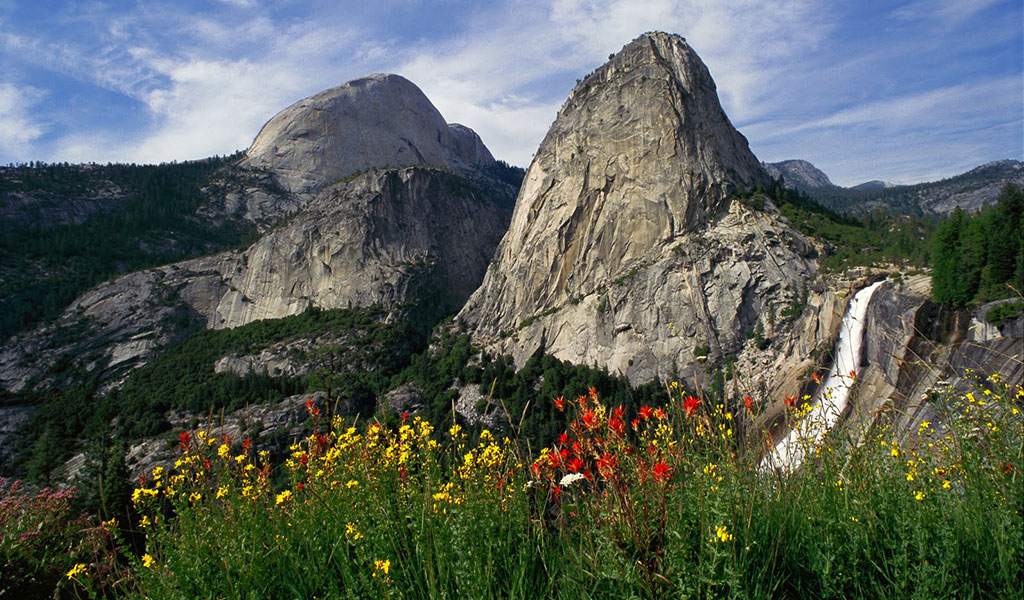
Discover gorgeous wildflower displays throughout Yosemite National Park in April, including on the trail to Nevada Fall. (Photo Nancy Robbins)
Lower elevation areas like Yosemite Valley, Hetch Hetchy or Wawona and the Mariposa Grove of Giant Sequoias are all excellent places to visit during the month of April with relatively easy accessibility. These locations provide the best of the aforementioned waterfall wandering, mountain meandering, and fun flower viewing opportunities.
Waterfall Wandering
Yosemite Valley holds many of the park’s most notorious waterfalls, and after a warm day in April, you’ll find them all flowing fast and free. You don’t even have to leave your car (though we recommend that you do) to see Bridalveil Fall or Yosemite Falls.
In April, you will probably also be treated to the elegant cascades of Sentinel Fall or the tallest single drop waterfall in the park, Ribbon Fall. Parts of the Mist Trail and the John Muir are often closed in winter, but you can hike the Winter Route to see both Vernal and Nevada Fall using the parts of both trails that remain open.
Don’t forget to visit Wawona’s waterfall while you’re here as well. The Chilnualna Fall trail starts just a few minutes from the Redwoods In Yosemite cabins, and leads up past a series of gorgeous waterfalls and cascades.
Tips for exploring snow-covered trails: Traction devices like Stabilicers or Yak-Tracks can help with footing on packed out snow on popular trails, and don’t underestimate the utility of a pair of hiking poles. The snow will be more firm (and slippery) early in the morning and late in the evening when the temperatures are cooler, and will soften during the day. That means that you may be able to walk on top of the snow in the morning, but will sink through as the day goes on, making travel more difficult.
Mariposa Grove of Giant Sequioas
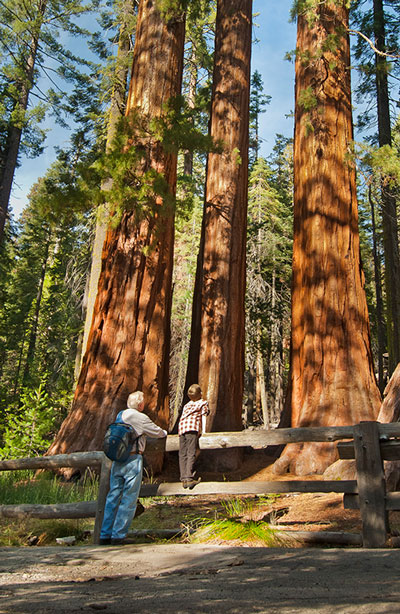
Just a short distance from Wawona, the Mariposa Grove of Giant Sequoias is Yosemite’s largest and most impressive grove of sequoia trees.
There are over 500 giant sequoia trees in the Mariposa Grove of Giant Sequoias. Estimated to be thousands of years old, each is a testament to longevity and endurance. An ancient wisdom permeates the entire grove.
To get there, park at the large parking area near the south entrance gate to Yosemite National Park. If the winter has been relatively warm and dry, there could be a free shuttle service to the Arrival Area at the lower grove. If not, you can walk the Washburn Trail that starts at the far end of the parking area, or stroll up the road to get to the lower Mariposa Grove. It’s about 2 miles each way. This is more effort, but also means that you’ll have the grove more to yourself when you get there.
Beyond that you have a selection of trails to explore. Most people try to take in the Grizzly Giant Loop (2.0 miles/3.2 km) which includes named trees like the Fallen Monarch, the Bachelor and Three Graces, the Grizzly Giant and the California Tunnel Tree, but there are shorter and longer options available.
Stopping to Smell the Flowers
Each spring a wave of wildflower blossoms start in the central valley and slowly makes its way up into the mountains. By April, the fields of orange poppies have often passed their peak, and are now giving way to great swaths of purple lupines that line the roads through Wawona. The keen-eyed will also marvel at the variety of wildflowers to be found along the Wawona Meadow Loop, and scattered throughout the forest at that elevation.
Our Furred and feathered friends
As spring’s warmth spreads, you’ll also find more birds and other wildlife filling Yosemite’s landscape too. Bears awaken from a winter’s rest and begin to frequent Yosemite’s meadows looking for food. Peregrine Falcons, still listed on California’s endangered species list return to their nests and begin preparing for the next generation.
Rock Climbing
As soon as the weather warms, rock climbers return to Yosemite’s clean granite cliffs. In addition to spotting them on bold ascents of El Capitan, keep your eyes open at smaller crags as well, like the rock wall at the back of the Churchbowl Picnic area.
If you, or someone in your group, would like to try climbing Yosemite’s famous rock walls, the Yosemite Mountaineering School has a variety of classes and guided climbs to introduce climbers and would-be climbers to the area.
Don’t forget the simple pleasures too
There are also plenty of small pleasures that you can expect when taking a relaxing vacation in the mountains. Curl up in front of a roaring fire with a good book and good company. Slip out to the hot tub, or relax in the Jacuzzi. Get entirely too caught up in a board game with friends. Or hold a debate about what kind of animal might have left that strange track you found in the snow. Ultimately, these quiet activities and small moments of discovery can be among the most rejuvenating and precious.
Where to Stay
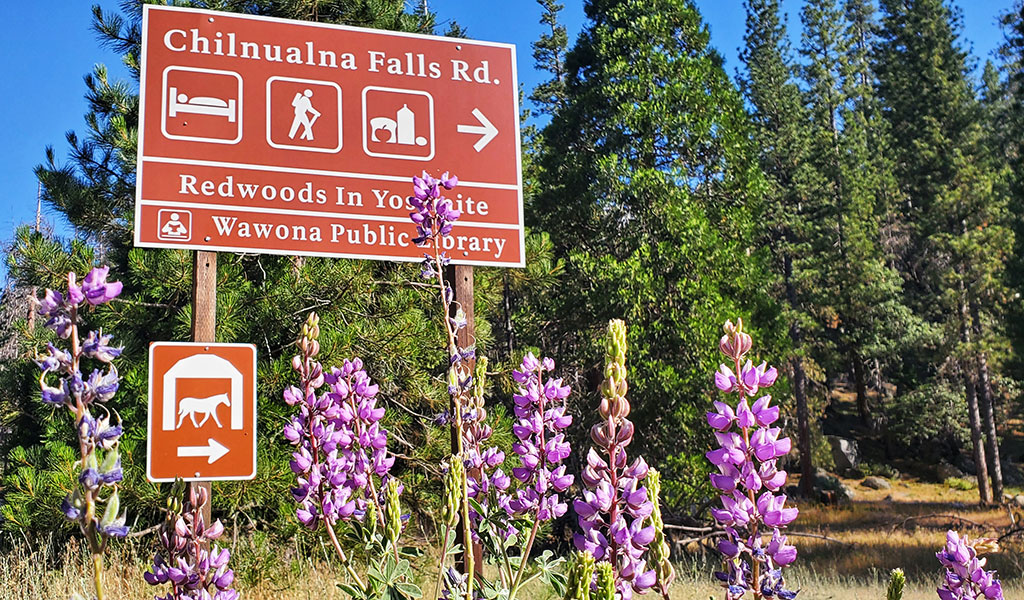
Choose a vacation rental cabin from the Redwoods In Yosemite located inside Yosemite National Park in the community of Wawona.
There are many accommodation options inside Yosemite National Park, from camping to the historic luxury. However, the best option for a place to stay in April has to be a rental cabin in Wawona. Yes, of course we’re biased, but hear us out.
Naturally, it’s nice to stay inside Yosemite National Park. You’re closer to all that the park has to offer, and you can spend more of your vacation being here instead of getting here.
Unlike a hotel room, a vacation rental cabin has more of the conveniences of home. You can save money by bringing groceries with you and preparing the food you enjoy. There’s room to spread out and relax. Private homes are… well, more private. No need to worry about the noise coming from the room next door. And if the stray April storm does blow through during your visit, some homes even give you access to laundry facilities. A dryer can come in handy to dry everyone out at the end of a day of exploration. Plus, if you have fur family you can rent a vacation cabin that is pet-friendly, and bring your pup with you.
With some services, it can be hard to tell if the rental cabin that you’re looking at is inside the park or not. With The Redwoods In Yosemite, you know that you’ll be located in Wawona, close to the Mariposa Grove of Giant Sequoias, and inside the park gate. Plus, The Redwoods In Yosemite makes it easy to find a place that is the perfect fit for you, with convenient filters for amenities like EV chargers, or a fireplace.

